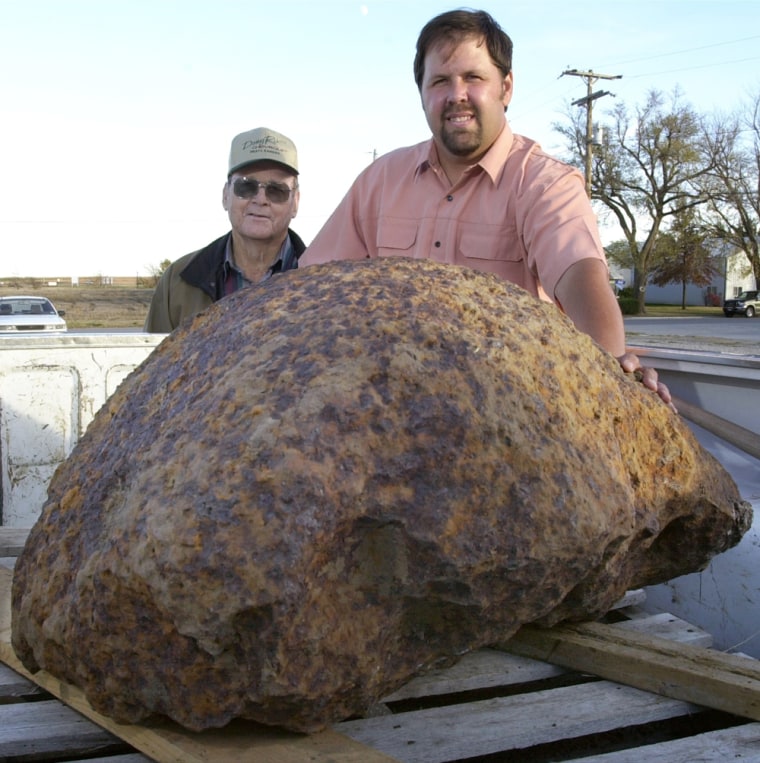A rare 1,400-pound (635-kilogram) meteorite was discovered seven feet (2 meters) underground by a collector in an area long known for producing prized space rocks.
Using a metal detector mounted on a three-wheel vehicle, Steve Arnold of Kingston, Ark., found the huge meteorite two weeks ago in Kiowa County’s Brenham Township in southern Kansas.
The meteorite is classified as an oriented pallasite, a type noted for a conical shape with crystals embedded in iron-nickel alloy. Only two larger ones of that type are known to have been found: a 3,100-pounder in Australia and a 1,500-pounder in Argentina. Those translate into 1,400 and 680 kilograms respectively.
The Kansas rock was found in the same area that in 1949 produced a 1,000-pound (450-kilogram) meteorite now on display at the Celestial Museum in Greensburg.
Meteorites change shape as they enter Earth’s atmosphere. An oriented meteorite, which is rare, maintains a stable flight rather than tumbling.
“It is aesthetically the type of meteorite that makes collectors drool,” said Arnold, who has hunted for meteorites around the world and estimates his find is worth “seven figures.” Arnold said he wants to sell it, preferably to a museum or someone who will keep it intact.
It's impossible to predict how much a buyer would pay for the meteorite. However, experts consulted by MSNBC.com said a seven-figure estimate was not unreasonable, considering the usual per-gram price for pallasite specimens and the significance of this particular specimen.
"There hasn't really been anything on the market that we could compare it to," said Geoff Notkin, who helped spread the word about the find on the Meteorite-List e-mail forum.
According to the American Museum of Natural History in New York, the so-called Brenham meteorite exploded centuries ago over what is now Kansas, scattering more than 3 tons of fragments.
Most pieces found in the area are no larger than a grapefruit, said Rex Buchanan, associate director of the Kansas Geological Survey.
This report includes information from The Associated Press and MSNBC's Alan Boyle.
